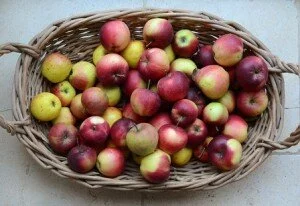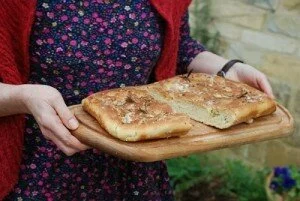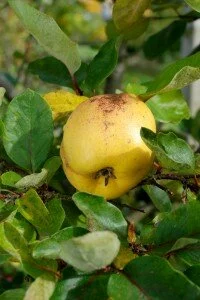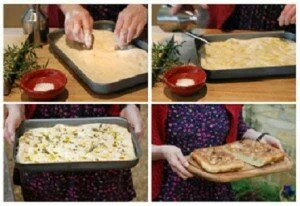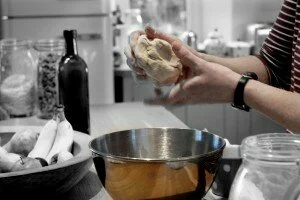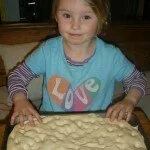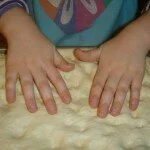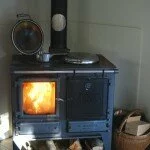Rampant storms seem to have taken over from all those misty mornings and mellow fruitfulness. Soon all the russet leaves will be on the ground, so before I forget what an utterly stunning Autumn it’s been, I thought I’d recap. And in true “hygge” style, savour the cosiness of wintry baking.
I can’t remember an Autumn when Keats’ words were more apt. This season of “mists and mellow fruitfulness” has been exactly that: so many mornings eating breakfast while the sun attempts to break through the mist hanging low over the fields. The coppery, golden and amber hues have been more vivid than ever, stunning as a bright blue sky replaces the mist as a backdrop. And as for the mellow fruitfulness, many of the Quince have been made into membrillo and jars of jelly, Ruby and friends collected rose-hips for syrup and apples are in plentiful supply.
The wood-burning stove is lit most days and it’s time for slow-cooked stews and baking. Quince and Apple cake from Sarah Raven’s fab ‘Garden Cookbook’ (one of my most-used cookbooks) is my new favourite cake, quince has been used in a Venison, Quince and Cider Stew today and the smell of baking bread draws me into the kitchen. More tempting than venturing outside this week.
I’m still loving using the sourdough starter (offspring of Priscilla Queen of the Refrigerator) kindly sent to me by Celia of Fig Jam and Lime Cordial, while Ruby and friends are ever niftier at cake-baking. I can let them get on with so much weighing and mixing, even chopping these days without chaos but it’s good to see that cleaning the bowl from chocolate cake is still the preferred baking activity. And although rapidly growing up, my daughter still has fingers that are the perfect size for those dimples in foccacia.
This is the focaccia recipe I generally use:
500g strong white bread flour
1 dessert spoon Maldon sea salt + extra for sprinkling
I x 7g sachet dried, fast-action yeast
2 tablespoons olive oil + extra for drizzling
3 sprigs fresh rosemary, leaves chopped
Mix together the flour and dessert spoon of salt in a large bowl and add the yeast along with 350ml warm water and the 2 tablespoons of oil. Bring together into a dough and knead on a floured surface for 10 minutes until the dough loses its stickiness and becomes nicely pliable. Put it in an oiled bowl, cover with a damp tea towel and leave for an hour or so until doubled in size. Knock back the dough and leave to rise again for another hour then press into a lightly oiled rectangular baking tin. Cover with a damp tea towel and leave to prove for 1/2 hour (close to the oven) while the oven heats to its highest setting.
Use your own fingertips (or borrow some from a child as I often do) to poke rows of dimples. Well, maybe not quite as orderly as rows if you’re anything like my daughter – or me. Drizzle liberally with olive oil (it will collect deliciously in those dimples) and sprinkle with sea salt and rosemary. You can vary your focaccia each time, maybe pressing halved cherry tomatoes into the dough or some olives.
Of course I haven’t just been gazing at leaves and baking lately – it seems as if our lives are ever busier, particularly with work and school. All the more reason to make focaccia!


